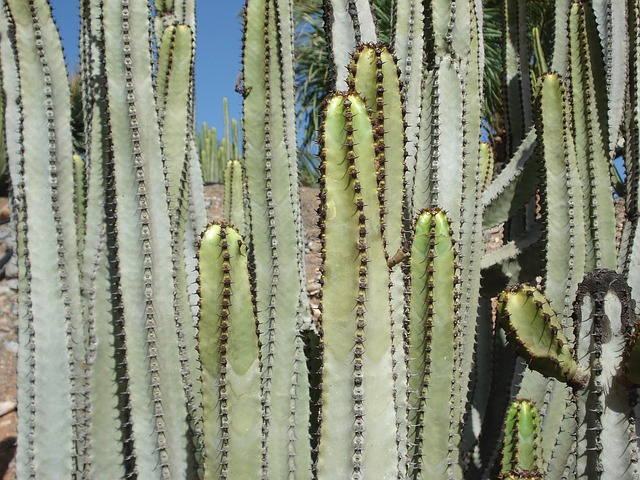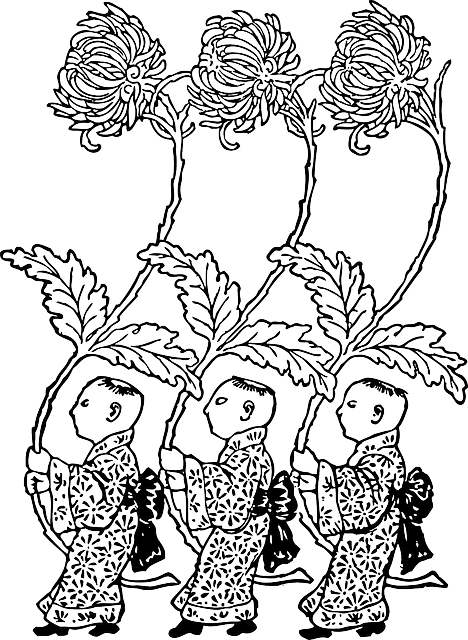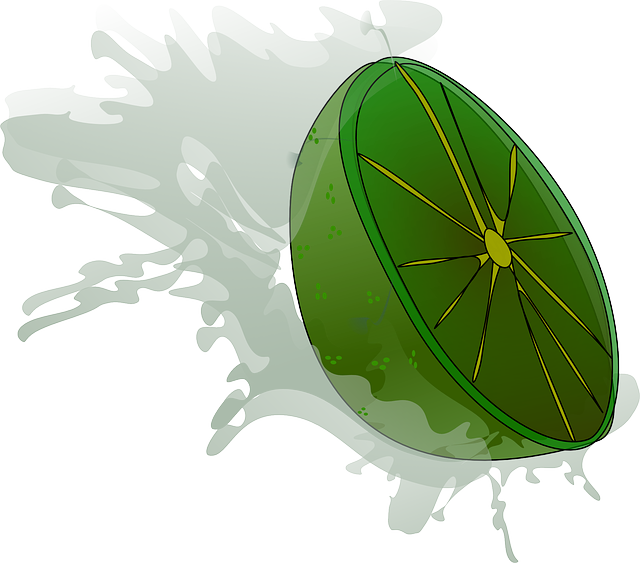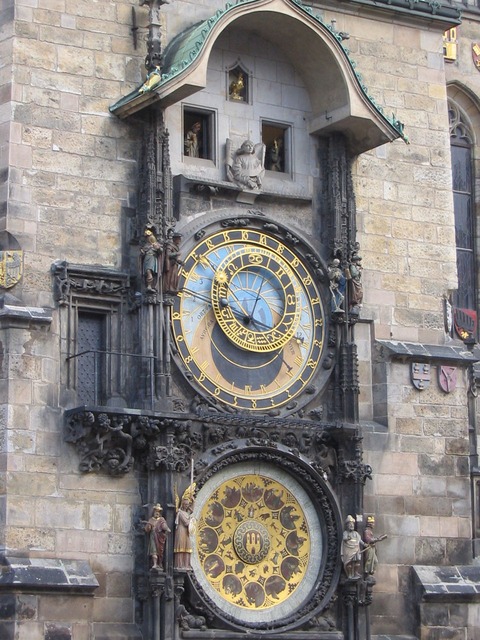ست - پر إب سن
| Seth-Peribsen | |||||||||||||||||||||||||||||
|---|---|---|---|---|---|---|---|---|---|---|---|---|---|---|---|---|---|---|---|---|---|---|---|---|---|---|---|---|---|
| Peribsen, Ash-Peribsen | |||||||||||||||||||||||||||||
|
آنية حجرية لـست-پريبسن، منقوش عليها "جزية شعب ست-رع"، المتحف الأثري الوطني (فرنسا).
| |||||||||||||||||||||||||||||
| فرعون مصر | |||||||||||||||||||||||||||||
| الحكم | طول العهد غير معروف, الأسرة الثانية؛ حوالي 2740 ق.م. | ||||||||||||||||||||||||||||
| سبقه | غير أكيد؛ وعج نس، سن إدج أوسخم إب -برن ماعت | ||||||||||||||||||||||||||||
| تبعه | غير أكيد؛ سن إدج، ست-پريبسن أوخع سخم وي | ||||||||||||||||||||||||||||
الألقاب الملكية
| |||||||||||||||||||||||||||||
| المدفن | المقبرة 'P' في أم القعاب (أبيدوس) | ||||||||||||||||||||||||||||
ست - پر إب سن بالإنجليزية Seth-Peribsen هوفرعوناً من الأسرة المصرية الثانية حكم لمدة سبعة عشر عاماً. ويعتبر الفرعون السابق للفرعون خع سخم وي. وقد دفن في أم القعاب في أبيدوس، حيث عـُثر على نقش ختم يحوي أول جملة كاملة مكتوبة بالهيروغليفية.
ألواح دفنه التذكارية (احداهم معروضة في المتحف البريطاني) تـُظهر مخلوق يمثل ست بدلاً من رسم حورس الأكثر اعتياداً، الأمر الذي قد ينم عن أنه لم يحكم جميع مساحة مصر.
هناك جدلاً واسعاً إذا ما كان پر إب سن قد خلفه سخم إب -برن ماعت، أوإذا ما كانا نفس الشخص, باسمين مختلفين (وهوما قد يفسر وجود الكائن الشبيه بالإله ست على السـِرخ (الخرطوش)).
الأدلة الأثرية
The serekh for Peribsen was found pressed in earthen jar seals made of clay and mud and in inscriptions on alabaster, sandstone, porphyry and black schist vessels. These seals and vessels were excavated from Peribsen's tomb and at an excavation site in Elephantine. One clay seal with Peribsen's name was found inside the mastaba tomb K1 at Beit Khallaf.
Two large tomb stelae made of granite were found at his burial site. Their shape is unusual and they appear unfinished and rough. Egyptologists suspect that this was done deliberately, but the reasons are unknown. A cylinder seal of unknown provenance shows Peribsen's name inside a cartouche and gives the epithet Merj-netjeru ("beloved of the gods"). This arrangement leads Egyptologists and archaeologists to the conclusion that the seal must have been created later, in memoriam, because the use of royal cartouches began long after Peribsen's reign. Another seal of the same material shows Peribsen's name without a cartouche, but with the royal title Nisut-Bity ("king of Lower- and Upper Egypt") instead.
الإسم
أثار الإهتمام بوجه خاص لأن أحد أسمائه المدونة في صورة قابلة قصره لم تعتليه كالمعتاد صورة الإله حورس Horus، وإنما حلت مكانها صورة الإله ست Seth، بالرغم من ذلك فإن خليفته المباشر – أوخليفته الثاني أي الملك "خع سخموي Khasekhemouy" صور الإلهين يقابلان بعضهما.
الدوافع الدينية لتوحد پر إب سن مع ست
- النظريات القديمة
A theory that was popular until the mid 20th century, supported by Egyptologists Percy Newberry, Jaroslav Černý, Walter Bryan Emery and Bernhard Grdseloff held that Peribsen was a heretic who sought to introduce a new, monotheistic state religion to Egypt, with Seth as the only worshipped god. Peribsen's actions were thought to be similar to those of the much later 18th dynasty pharaoh Akhenaten, who had required Egyptians to serve only Aten. Newberry proposed that the priests of Horus and Seth fought each other "in the Manner of a war of the roses" during the second half of the Second dynasty.
The "heretic Peribsen" theory was based on three observations: that the name "Peribsen" was excluded from later king lists, that the king's tomb had been destroyed and plundered during antiquity and finally that the tomb stelae of Peribsen, that once displayed the Set animal, were badly scratched with the clear intention of effacing the Seth image. Egyptologists hypothesized these were the actions of religious opponents to the Sethian priest-caste. Lauer and Firth relied on the "heretic Peribsen" theory to explain the enormous quantity of stone vessels inscribed with the name of First and Second dynasty kings found beneath Djoser's pyramid in bags bearing seals of Khasekhemwy and Djoser. They proposed that Peribsen had plundered the tombs of his predecessors, followers of Horus, and scattered their funerary equipment. These vessels were gathered in the royal treasury during Khasekhemwy's reign following his reunification of Egypt, and finally put beneath the step pyramid by Djoser, in an act of pious devotion.
- النظريات المعاصرة
Today this theory, as well as Lauer and Firths' conclusions, is widely questioned. Archaeological evidence of Peribsen has almost entirely been found in Upper Egypt. In particular, his name does not appear in Lower Egyptian records surviving from that time. It is argued that Peribsen may not have ruled over all of Egypt and therefore did not have the authority to force a change in state religion. Another piece of evidence that argues against the "heretic Peribsen" theory is the false door of the priest Shery at Saqqara. Shery held office during the early Fourth dynasty. The inscription on the false door connects the name of Peribsen in one sentence with another shadowy king of the Second dynasty, Senedj. According to the addendum, Shery was "overseer of all wab-priests of king Peribsen in the necropolis of king Senedj, in his mortuary temple and at all other places". This implies that the funerary cult of Peribsen continued at least until the Fourth dynasty, inconsistent with the assumption that Peribsen's name was not allowed to be mentioned. Additionally, Egyptologists such as Herman te Velde point out that Shery was not the only Fourth dynasty priest participating in the funerary cult of Peribsen. Inkef, possibly a brother or cousin of Shery, also held the title of a "supervisor of Ka-priests of Peribsen".
Seal impressions found in Peribsen's tomb at Abydos show several deities: Ash, Min and Bastet, suggesting they were venerated during Peribsen's time on the throne. This finding argues against Peribsen worshipping a single god, or promoting monotheism. The heretic theory of Newberry, Černý, Grdseloff and others was devised from the very limited archaeological information available during their lifetimes. Most of the found clay seal impressions were still undeciphered and untranslated at their time.
According to the Egyptologists Jean Sainte Fare Garnot and Herman te Velde, the name of "Peribsen" accords religious meaning, even before association with a deity. The name "Peribsen" literally means "He who comes forth by their will" or "His heart and will comes forth for them." The Egyptian syllable sn means "them, their, those", revealing a clear plural writing. Te Velde and Garnot are convinced that Peribsen used the heraldic Seth animal as a serekh patron, but also linked his name to Horus. If true, it would prove that Peribsen worshipped Horus and Seth on an equal footing during his lifetime. An ostentatious plural meaning with religious ambiguity was not uncommon for pharaohs' names in the early Egyptian dynasties. Peribsen may have been perceived as a living incarnation of both Horus and Seth in equal measure, just like his predecessors on the throne. Therefore, Peribsen's name may actually show no break in the sacred tradition; he added the power of Seth to Horus. As further examples, the titles of early dynastic queens used plural patron deities, such as "she who is allowed to see Horus and Seth" and "she who carries Horus and Seth". Similarly, the unusual serekh of king Khasekhemwy, the last ruler of the Second dynasty, shows the deities Horus and Seth together atop the serekh. Horus wears the White Crown of Upper Egypt and Seth wears the Red Crown of Lower Egypt. Both gods are depicted facing each other in a kissing gesture. This special name was meant to illustrate the dual incarnation of the king as the representative of Horus and Seth, with power over all Egypt. Khasekhemwy's name can be interpreted as an advanced form of Peribsen's serekh name.
Egyptologists Ludwig David Morenz and Wolfgang Helck remark that the targeted gouging of Seth-animals did not occur until the New Kingdom of Egypt. The erasure of the Seth chimera on Peribsen's tomb stelae had been attributed to activity shortly after his death under the "heretic" theory; new discoveries suggested the defamation occurred centuries later. Historian Dietrich Wildung states that the necropolis of Abydos was not the only one plundered in antiquity: the tombs at Saqqara and Giza were also ransacked. Thus, he concludes that any targeted action against one particular pharaoh can be excluded.
دوافع سياسية
The earlier theories of Newberry, Černý and Grdseloff said that the Egyptian state under Peribsen suffered from several civil wars, either economic or political in origin. If he was held responsible for the putative misery in the past, this could explain why later king lists excluded Peribsen.
In contrast, more recent theories now hold that, if the Egyptian kingdom was divided, the division happened peacefully. Egyptologists such as Michael Rice,Francesco Tiradritti and Wolfgang Helck point to the once palatial and well preserved mastaba tombs at Sakkara and Abydos belonging to high officials such as Ruaben and Nefer-Setekh. These are all dated from the reign of Nynetjer to that of Khasekhemwy, the last ruler of the Second dynasty. Egyptologists consider the archaeological record of the mastabas' condition and the original architecture as proof that the statewide mortuary cults for kings and noblemen successfully took place during the entire dynasty. If true, their preservation is inconsistent with the theory of civil wars and economic problems during Peribsen's reign. Rice, Tiradritti and Helck think that Nynetjer decided to leave a divided realm because of private or political reasons and that the split was a formality sustained by Second Dynasty kings.
The origin of the political division is unknown. It might have happened at the beginning of Peribsen's rule or shortly before. Because Peribsen chose the deity Seth as his new throne patron, Egyptologists are of the view that Peribsen was a chieftain from Thinis or a prince of the Thinite royal house. This theory is based on Seth being a deity of Thinite origin, which would explain Peribsen's choice: his name changing may have been nothing more than smart political (and religious) propaganda. Peribsen is thought to have gained the Thinite throne and ruled only Upper Egypt, whilst other rulers held the Memphite throne and ruled Lower Egypt.
من هو؟
عهده
ارتسمت خلال الأسرة الثانية معالم حركة جدلية قوامها الإله حورس والإله ست ثم حورس وست معا يدخلان في نطاق المظاهر الفكرية والتي من الممكن كانت تخفي في طياتها اتجاها سياسيا. ولكن ما هذا الاتجاه،يا ترى؟ هل هوالتنافر والتضاد، ثم التصالح بين أرستقراطية تشبعت بتنطقيد الصيادين من البدوالرحل، وبين العامة الدهماء من القرويين،يا ترى؟ يظهر حتى حكم "بر إيب سن" قد اقتصر بصفة عامة على الجنوب فقط، أما الشمال فقد كانت تهيمن عليه سلالة من منف. وبالرغم من تنافس هذه السلالة مع "بر إيب سن" فإن هذا لا يعني أنها كانت تناصبه العداء: فبداخل المعبد الجنائزي للفرعون سنح Senedj، أقيم هيكل كرسه للملك "بر إب سن" ، مما يشير على مثال رائع للتعايش، حتى ولوكان في العالم الآخر!
مؤيدونظرية المملكة المقسمة
Egyptologists Wolfgang Helck,Nicolas Grimal, Hermann Alexander Schlögl and Francesco Tiradritti believe that king Nynetjer, the third ruler of the Second dynasty and predecessor to Peribsen, ruled an Egypt that was suffering from an overly complex state administration. Nynetjer decided to split Egypt to leave it to two chosen successors who would rule two separate kingdoms, in the hope that the state administration could improve. Archaeological evidence, such as the imprinted clay seals and inscribed jars, appear to support the claim that Peribsen ruled only in Upper Egypt. A great number of these were found in Abydos, Naqada and at Elephantine, with only a single clay seal bearing his name found in Lower Egypt, at Beit Khallaf. Historians think Peribsen's realm would have extended from Naqada to the Isle of Elephantine. The rest of Egypt would therefore have been controlled by a different, coexisting ruler.
Egyptologist Dimitri B. Proussakov supports his theory with notations on the famous Palermo stone concerning the year events of king Nynetjer. From the twelfth year event onward, "The king of Upper- and Lower Egypt appears" was amended to "The king of Lower Egypt appears". Proussakov sees this as a strong indication that Nynetjer's power over Egypt had diminished. Egyptologists compare the situation to that of king Qa'a, one of the last rulers of the First dynasty. When Qa'a died, obscure claimants appeared and battled for the throne of Egypt. The struggles reached an apex with the plundering of the royal cemetery at Abydos, whereupon the cemetery was abandoned and Saqqara became the new royal burial site. The conflict was ended by the ascension of king Hotepsekhemwy, the founder of the Second dynasty.
Barbara Bell, another scholar, believes that an economic catastrophe such as a famine or a long-lasting drought affected Egypt. To better address the problem of feeding the Egyptian population, Nynetjer split the realm into two and his successors founded two independent realms, perhaps with intent to reunite after the famine. Bell points to the inscriptions of the Palermo stone, where, in her opinion, the records of the annual Nile floods show constantly low levels during this period. Bell's theory is refuted today by Egyptologists such as Stephan Seidlmayer, who asserts her calculations were incorrect. Seidlmayer has shown that the annual Nile floods were at usual levels at Nynetjer's time up to the period of the Old Kingdom. Bell overlooked that the heights of the Nile floods in the Palermo stone inscription take into account the measurements of the nilometers around Memphis, but not elsewhere along the river. A state-wide drought was unlikely.
معارضونظرية المملكة المقسمة
Scholars such as Herman TeVelde, I. E. S. Edwards and Toby Wilkinson believe the inscription of the famous Annal stone of Fifth dynasty, a black olivin-basalt slabstone displaying a very detailed king list, argues against the division of the realm. On the stone the kings from 1st to 7th dynasty are listed by their Horus name, their gold name and their cartouche name, their name banderoles end with the name of their royal mother. The lists also contain rectangular windows presenting year events from the day of king's coronation up to his death. The most famous fragments of the Annal stone are called Palermo Stone and Cairo Stone. On the Cairo stone, in line IV, the nine last years of king Nynetjer are preserved (but most of the year windows are illegible now). The date of Nynetjer's death is followed by a new king. Recent investigations reveal that the serekh of that new king is surmounted by a four-legged animal, not by the Horus-falcon. Since the only four-legged heraldic serekh animal in early Egypt was the chimera of the god Seth, despite passionate disagreement, the indicated ruler is likely to be Peribsen. Egyptologists such as TeVelde, Barta and Edwards do not agree; Peribsen might have not been the only king with a Seth-name. The year events under Nynetjer show increasing references to Seth, suggesting the tradition of a Horus name as the sole name of kings might have already evolved. The rise of a king allied with Seth was thus unsurprising. TeVelde, Barta and Edwards think that, in addition to Peribsen, the rulers Wadjenes, Nubnefer or Sened might have been Seth-kings as well; one of them surely was the true direct successor of Nynetjer. The comparatively large amount of archaeological finds from Peribsen's reign contradict the brief estimated length of rulership, onlyعشرة to 12 years, as presented on the Annal stone.
The Annal stone gives absolutely no indication of a division of the Egyptian realm. Barta, TeVelde, Wilkinson and Edwards argue that the theory of state division is untenable. An administrative reorganization or split in the priesthood sects is more likely.
الإنجازات السياسية
During his time on the throne, Peribsen founded an administrative center called "The white house of treasury" as well as a new royal residence, called the "protection of Nubt", located near Ombos ("Nubt" being the Ancient Egyptian name of Naqada). The administrative titles of scribes, seal-bearers and overseers were adjusted to correspond to the divided bureaucratic state administration. For example, titles like "sealer of the king" were changed into "sealer of the king of Upper Egypt". This bureaucratic reform may indicate an attempt by Peribsen to limit the power of these officials, further evidence for a bloated and unwieldy state administration under Nynetjer.
The administration system under Peribsen and Sekhemib had a clear and well-defined hierarchy; as an example, from highest to the lowest rank: Treasury house (royal and therefore highest in ranking) → pension office → property → vineyards → private vineyard (property of citizens and therefore lowest in ranking). King Khasekhemwy, the last ruler of the Second dynasty, was able to re-unify the state administration of Egypt and therefore unite the whole of Ancient Egypt. He brought the two treasury houses of Egypt under the control of the "House of the King", bringing them into a new, single administration centre.
Peribsen also founded royal edifices such as Per-nubt ("house of Ombos") and Per-Medjed ("house of meetings") and created several cities of economic importance. Their names, Afnut ("city of the headdress-makers"), Nebj ("protector's city"), Abet-desheret ("city of the red granite jars") and Huj-setjet ("city of the Asians'), are mentioned on numerous clay seals alongside Peribsen's serekh, often preceded by the phrase "visit of the king at ...". Inscriptions on stone vessels also mention an "ini-setjet" ("tribute of the people of Sethroë"), which might indicate that Peribsen founded a cult centre for the deity Seth in the Nile Delta. This may suggest Peribsen ruled over the whole of Egypt, or, at least, that he was accepted as king across all of Egypt.
One official from Peribsen's reign, Nefer-Setekh ("Seth is beautiful"), the "wab-priest of the king", is known to Egyptologists by his stela. His name may highlight the appearance and popularity of Seth as a royal deity.
In Peribsen's tomb at Abydos, clay seals were found that demonstrate the first complete written sentence in recorded Egyptian history. The inscription reads:
"The golden one/He of Ombos hath unified/handed over the two realms for/to his son, the king of Lower and Upper Egypt, Peribsen".
The title "The golden one", also read as "He of Ombos", is considered by Egyptologists to be a religious form of address to the deity Seth.
التغيرات الدينية
Despite his alignment with Seth, numerous deities were worshipped by the populace under Peribsen. Numerous clay seal impressions and jar inscriptions mention the gods Ash, Horus, Nekhbet, Min, Bastet and Kherty. The depictions of the deities are followed by the name of the place or town where they had their principal cult center. On the Cairo stone, a statue of Ash and a fetish of Seth are credited to Peribsen, complementing the clay seal impressions. Curiously, several seal impressions show a sun disc over the Seth chimera atop the royal serekh: the ancient symbol for the god Ra. There is no archaeologic proof that the sun god Ra was part of the Egyptian pantheon at this early date; the appearance of the disc may be the first evidence of the evolving sun cult and theistic change. The sun disc appears in connection to one of the state patrons (for example, under Peribsen's predecessor Raneb the sun was connected to Horus); under Peribsen it was connected to Seth. Under king Khasekhemwy the sun finally received its own name (ra) and, at the time of throne change between Khasekhemwy and his follower Djoser, several priests and officials also connected their name to Ra.
حكام مصر السفلى والعليا
Egyptian historians such as Helck, Tiradritti, Schlögl, Emery and Grimal are convinced that Peribsen was a co-ruler. The investigation into the rulers of Lower Egypt is ongoing. The Rammesside king lists differ in their order of royal names from king Senedj onward. The royal table of Sakkara and the royal canon of Turin reflect Memphite traditions, which only allowed Memphite rulers to be mentioned. The Abydos king list reflects instead the Thinite traditions and therefore only Thinite rulers appear on that list. Until king Senedj, all the king lists are in agreement. After him, the Sakkara list and the Turin list mention three kings as successors: Neferkara I, Neferkasokar and Hudjefa I. The Abydos king list jumps forward to Khasekhemwy, calling him "Djadjay". The discrepancies are considered by Egyptologists to be the result of the division of Egypt during the Second dynasty.
Additional contradictory findings are the Horus and Nebty names of kings discovered in the Great Southern Gallery in the necropolis of the (Third dynasty) king Djoser في سقارة. Stone vessel inscriptions mention the kings Nubnefer, Weneg-Nebty, Horus Ba, Horus "Bird" and Za; each of these is mentioned only a few times, suggesting their reigns were short. King Sneferka might be identical with king Qa'a or an ephemeral successor of his. King Weneg-Nebty might be identical with the Ramesside cartouche name Wadjenes. But kings such as "Nubnefer", "Bird" and "Za" remain a mystery. They never appear anywhere else and the number of objects surviving from their lifetimes is very limited. Schlögl, Helck and Peter Kaplony postulate, that Nubnefer, Za and Bird were contemporaries of Peribsen and Sekhemib and ruled over Lower Egypt, whilst the latter two ruled Upper Egypt.
قبره
Peribsen was buried in the tomb P of the royal cemetery at Umm el-Qa'ab near Abydos. The first excavation of the tomb started in 1898 under the supervision of French archaeologist and Egyptologist Émile Amélineau. This first foray was followed by excavations in 1901 and 1902 under the supervision of British archaeologist Sir William Matthew Flinders Petrie. Further exploration of the tomb was undertaken in 1928 by the Swiss Egyptologist Edouard Naville.
انظر أيضا
- الأسرة المصرية الثانية
- قائمة الفراعنة
- قدماء المصريين
وصلات خارجية
- Francesco Raffaele: Seth-Peribsen
- Tomb P (Peribsen) at Abydos on digitalegypt
المصادر
- ^ Ash/Seth Peribsen
- ^ British Museum Website
- ^ William Matthew Flinders Petrie, Francis Llewellyn Griffith: The royal tombs of the earliest dynasties/ 1901: Part II. (= Memoir of the Egypt Exploration Fund. Vol. 21, نطقب:ZDB). Offices of The Egypt Exploration Fund u. a., London 1901, Tafel XXII, Abb. 178–179, (Complete essay as PDF-file).
- ^ Jeffrey A. Spencer: Early Egypt: The rise of civilisation in the Nile Valley. British Museum Press, London 1993, ISBN 0-7141-0974-6, p. 67–72 & 84.
- ^ W. M. Flinders Petrie: The Royal Tombs of the Earliest Dynasties, Part II. London 1901, Tafel XXII, page 178–179.
- ^ Jeffrey A. Spencer: Early Egypt: the rise of civilisation in the Nile Valley. British Museum Press, London 1993, page 67–72 & 84.
- ^ Francesco Tiradritti & Anna Maria Donadoni Roveri: Kemet: Alle Sorgenti Del Tempo. Electa, Milano 1998, ISBN 88-435-6042-5, page 84–85.
- ^ Peter Kaplony: Die Rollsiegel des Alten Reichs II: Katalog der Rollsiegel, Part II. Fondation égyptologique Reine Elisabeth, Brüssel 1981, page 13; tav. 1
-
^ پاسكال ڤيرنوس (1999). موسوعة الفراعنة. دار الفكر. Unknown parameter
|coauthors=ignored (|author=suggested) (help) - ^ after Hermann Alexander Schlögl: Das Alte Ägypten. S.77ff.
- ^ Jaroslav Černý: Ancient Egyptian religion. Hutchinson’s University Library, London u. a 1952, p. 32–48, Online article.
- ^ Walter B. Emery: Ägypten. Fourier, Wiesbaden 1964, ISBN 3-921695-39-2, p. 105–108.
- ^ خطأ استشهاد: وسم
<ref>غير سليم؛ لا نص تم توفيره للمراجع المسماةBGN - ^ P.E. Newberry: The Seth rebellion of the 2nd Dynasty, in: Ancient Egypt., no. 7, 1922, page 40–46.
- ^ Phillipe Flandrin: Jean-Phillipe Lauer: Saqqarah, Une vie, Entretiens avec Phillipe Flandrin, Petite Bibliotheque Payot 107, 1988
- ^ خطأ استشهاد: وسم
<ref>غير سليم؛ لا نص تم توفيره للمراجع المسماةHTV - ^ Auguste Mariette: Les mastabas de l'Ancien Empire. Paris 1885, page 92–94.
- ^ Nicolas Grimal: A History of Ancient Egypt. Wiley-Blackwell, Weinheim 1994, ISBN 978-0-631-19396-8, page 55–56.
- ^ Werner Kaiser: Zur Nennung von Sened und Peribsen in Saqqara B3. In: Göttinger Miszellen: Beiträge zur ägyptologischen Diskussion, No. 122. Ägyptologisches Seminar der Universität Göttingen, Göttingen 1991, ISSN 0344-385X, page 49–55.
- ^ خطأ استشهاد: وسم
<ref>غير سليم؛ لا نص تم توفيره للمراجع المسماةHAS - ^ Jean Sainte Fare Garnot: Sur quelques noms royaux des seconde et troisième dynasties ègyptiennes. In: Bulletin de l'Institut d'Égypte. vol. 37, 1, 1956, ISSN 0366-4228, p. 317–328.
- ^ Wolfgang Helck: Untersuchungen zur Thinitenzeit (= Ägyptologische Abhandlungen, Vol. 45). Harrassowitz, Wiesbaden 1987, ISBN 3-447-02677-4, p. 103-111.
- ^ Ludwig D. Morenz: Synkretismus oder ideologiegetränktes Wort- und Schriftspiel? Die Verbindung des Gottes Seth mit der Sonnenhieroglyphe bei Per-ib-sen. In: Zeitschrift für Ägyptische Sprache und Altertumskunde. vol. 134, 2007, ISSN 0044-216X, p. 151–156.
- ^ Dietrich Wildung: Die Rolle ägyptischer Könige im Bewusstsein ihrer Nachwelt. Volume 1: Posthume Quellen über die Könige der ersten vier Dynastien (= Münchner ägyptologische Studien. vol. 17, نطقب:ZDB). B. Hessling, Berlin 1969, p. 47.
- ^ Michael Rice: Who's Who in Ancient Egypt. Routledge, London/New York 2001, ISBN 0-415-15449-9, page 72, 134 & 172.
- ^ Francesco Tiradritti & Anna Maria Donadoni Roveri: Kemet: Alle Sorgenti Del Tempo. Electa, Milano 1998, ISBN 88-435-6042-5, page 80–85.
- ^ W. Helck in: Zeitschrift für Ägyptische Sprache und Altertum, No. 106. Akademie-Verlag, Berlin 1979, ISSN 0044-216X, page 132
- ^ Francesco Raffaele: Names, titles, identities and the 'Sethian Period' theory
-
^ خطأ استشهاد: وسم
<ref>غير سليم؛ لا نص تم توفيره للمراجع المسماةWOH - ^ Hermann A. Schlögl: Das Alte Ägypten. Geschichte und Kultur von der Frühzeit bis zu Kleopatra. Beck, München 2006, ISBN 3-406-54988-8, p. 77.
- ^ Nicolas Grimal: A History of Ancient Egypt. Wiley-Blackwell, Weinheim 1994, ISBN 978-0-631-19396-8, page 55.
- ^ Dimitri B. Proussakov: Early dynastic Egypt: A socio-environmental/anthropological hypothesis of "Unification". In: Leonid E. Grinin (Hrsg.): The early state, its alternatives and analogues. Uchitel Publishing House, Volgograd 2004, ISBN 5-7057-0547-6, p. 139–180.
- ^ Walter Bryan Emery: Great tombs of the First Dynasty (Excavations at Saqqara, vol. 3). Gouvernment Press, London 1958, p. 28–31.
- ^ Peter Kaplony: "Er ist ein Liebling der Frauen" – Ein "neuer" König und eine neue Theorie zu den Kronprinzen sowie zu den Staatsgöttinnen (Kronengöttinnen) der 1./2. Dynastie. In: Ägypten und Levante. vol. 13, 2006, ISSN 1015-5104, S. 107–126.
- ^ Barbara Bell: Oldest Records of the Nile Floods, In: Geographical Journal, No. 136. 1970, page 569–573; M. Goedike: Journal of Egypt Archaeology, No. 42. 1998, page 50.
- ^ Stephan Seidlmayer: Historische und moderne Nilstände: Historische und moderne Nilstände: Untersuchungen zu den Pegelablesungen des Nils von der Frühzeit bis in die Gegenwart. Achet, Berlin 2001, ISBN 3-9803730-8-8, page 87–89.
- ^ I. E. S. Edwards (Hrsg.): Early history of the middle east (= The Cambridge ancient history. Vol. 1–2), 3rd edition. Cambridge University Press, Cambridge 1970, ISBN 0-521-07791-5, p.31-32.
- ^ خطأ استشهاد: وسم
<ref>غير سليم؛ لا نص تم توفيره للمراجع المسماةTWR - ^ Jean-Pierre Pätznik: Die Siegelabrollungen und Rollsiegel der Stadt Elephantine im 3. Jahrtausend vor Christus. Spurensicherung eines archäologischen Artefaktes (= BAR, International Series. Bd. 1339). Archaeopress, Oxford 2005, ISBN 1-84171-685-5, p. 62–66.
- ^ Christian E. Schulz: Schreibgeräte und Schreiber in der 0. Bis 3. Dynastie. Grin, München 2007, ISBN 978-3-638-63909-5, p. 9–15.
- ^ Peter Kaplony: Die Inschriften der ägyptischen Frühzeit (= Ägyptologische Abhandlungen. vol. 8, 3, ISSN 1614-6379). Volume 3, Harrassowitz, Wiesbaden 1963, p. 406–411.
- ^ Eva-Maria Engel: Neue Funde aus alten Grabungen – Gefäßverschlüsse aus Grab P in Umm el-Qa'ab im Ägyptischen Museum Kairo. In: Gerald Moers u. a. (Hrsg.): Jn.t dr.w. Festschrift für Friedrich Junge. Volume 1. Seminar für Ägyptologie und Koptologie, Göttingen 2006, ISBN 3-00-018329-9, p. 179–188, especially p. 181, 183–184.
- ^ Jean-Pierre Pätznik: Die Siegelabrollungen und Rollsiegel der Stadt Elephantine im 3. Jahrtausend vor Christus. 2005, p. 64–66.
- ^ Toby Wilkinson: Early Dynastic Egypt. Routledge, London/New York, 1999, ISBN 0-415-18633-1, page 89–91.
- ^ Toby Wilkinson: Early Dynastic Egypt. Routledge, London/New York, 1999, ISBN 0-415-18633-1, page 295.
- ^ Jochem Kahl: "Ra is my Lord" : searching for the rise of the Sun God at the dawn of Egyptian history, Wiesbaden : Harrassowitz, 2007, ISBN 978-3-44-705540-6, see p. 3
- ^ Susanne Bickel: Die Verknüpfung von Weltbild und Staatsbild: Die Verknüpfung von Weltbild und Staatsbild Aspekte von Politik und Religion in Ägypten, In: Hermann Spieckermann: Götterbilder, Gottesbilder, Weltbilder. Mohr Siebeck, Ulmen 2006, ISBN 3-16-148673-0, page 89.
- ^ Jochem Kahl, Nicole Kloth, Ursula Zimmermann: Die Inschriften der ägyptischen Frühzeit: Eine Bestandsaufnahme, Vol. III. Harrassowitz Verlag, Wiesbaden 1963, ISBN 3-447-00052-X, page 368.
- ^ I.E.S. Edwards: The Cambridge ancient history, Volume 1-3. Cambridge University Press, 1970, ISBN 0-521-07791-5, page 31 & 32.
- ^ Jochem Kahl: »Ra is my Lord«: Searching for the Rise of the Sun God at the Dawn of Egyptian History. Harrassowitz, Wiesbaden 2007, ISBN 3-447-05540-5, p. 2–7 & 14.
- ^ Günther Dreyer, Werner Kaiser u. a.: Stadt und Tempel von Elephantine – 25. / 26. / 27. Grabungbericht. In: Mitteilungen des Deutschen Archäologischen Instituts, Abteilung Kairo (MDAIK). Bd. 55, 1999, ISSN 0342-1279, p. 172–174.
- ^ see: P. Lacau, J.P. Lauer: La Pyramide a Degeres IV. Inscriptions Gravees sur les Vases. Cairo 1959; obj.104
- ^ Peter Kaplony: A building named "Menti-Ankh". In: Mitteilungen des Deutschen Archäologischen Instituts Kairo (MDAIK), volume 20. de Gruyter, Berlin 1965, page 1–46.
- ^ Émile Amélineau: Mission Amélineau. Tome 4: Les nouvelles fouilles d'Abydos 1897–1898. Compte rendu in extenso des fouilles, description des monuments et objets découverts. Partie 2. Leroux, Paris 1905, page 676–679.
-
^ خطأ استشهاد: وسم
<ref>غير سليم؛ لا نص تم توفيره للمراجع المسماةLaBe -
^ خطأ استشهاد: وسم
<ref>غير سليم؛ لا نص تم توفيره للمراجع المسماةLBK - ^ Èdouard Naville: The cemeteries of Abydos. Part 1: 1909–1910. The mixed cemetery and Umm El-Ga'ab (= Memoir of the Egypt Exploration Fund. vol. 33, ISSN 0307-5109). Egypt Exploration Fund u. a., London 1914, page 21–25 & 35–39.
















